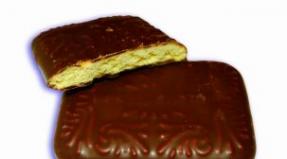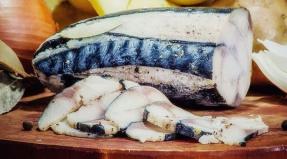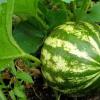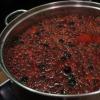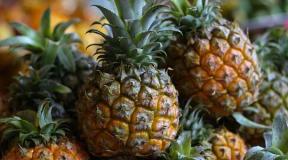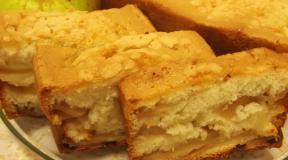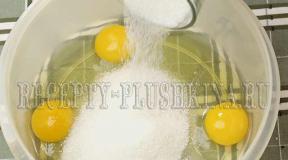How is instant coffee made? Instant coffee: how and from what it is made.
Man has always loved simple solutions and quick actions. Therefore, progress is always moving in this direction. It is also spurred on by the problem of disposal of residues, production waste, and the like. These needs have given rise to instant coffee - an instant drink, the production of which is used for everything that remains from the production and processing of beans. How is instant coffee made, how natural is it, and what is the share of the achievements of the modern chemical industry in it?
History of instant coffee
The first patent for instant coffee was obtained 125 years ago, in 1890. The author is a citizen of New Zealand. Then an American from Chicago received a similar technology in 1901. He was further promoted by an English chemist who lived and worked in Guatemala. Having invented his instant coffee in 1906, he not only patented it, but also tried to commercialize the invention by launching his own product on the market in 1909 under the brand name Red E Coffee.
All these first timid attempts to introduce the invention to the masses were unsuccessful. The population stubbornly refused to consume the novelty. In 1938, the Swiss Nestle was imbued with the problems of the Brazilian government and, at the request of the latter, developed a new brand of instant coffee. This was done, first of all, in order to solve the problem of surplus raw materials, residues and grain rejection. The result of the successful coincidence of the business interests of Brazil and Nestlé was brought to the market under the Nescafe brand.
The novelty was immediately criticized. Experts and ordinary consumers alike noted the lack of aroma and poor taste of instant coffee. Who knows what fate would have befallen the development, but World War II decided the outcome of events. Instant coffee has migrated to the trenches. It was drunk by both Germans and Americans. After the war ended, the soldiers who returned home brought instant coffee with them. They got used to the ersatz drink and continued to drink it. Subsequently, instant coffee firmly entered the everyday life of cabinet and office employees, people who could not afford to brew natural coffee due to the lack of time, funds or a stove at hand. After the advent of electric kettles, instant coffee became much more accessible, which greatly helped its spread.
What is instant coffee made of?
Natural grains are indeed the raw material for instant coffee. These are rejections, waste of coffee production, surplus, substandard, as well as the cheapest varieties.
Instant coffee production methods
Today there are two types of industrial production of instant coffee. Conventionally, they can be called high-temperature and low-temperature. The first appeared earlier, and for a long time it was with its help that all instant coffee in the world was obtained.
High temperature method
At the beginning of the process, substandard and rejected coffee beans are roasted and crushed. In this case, the particle size should not exceed 2 mm. The resulting product is poured with hot water and treated under a pressure of 15 atmospheres. The process takes about 3-4 hours, all this time the water temperature is maintained at a high level. After this washing, the mixture is cooled, filtered and then dried. The resulting coffee resembles powder in appearance, it is called so - powder. The finished product knocks into untidy lumps, sticks to the spoon. In order for the product to be more pleasant to the consumer, to have a marketable appearance, powdered coffee began to be subjected to additional processing. Before final drying, the sublimate is churned into granules or treated with steam, from which the particles also collect into dense formations. Only then is the product subjected to final drying. Granular coffee looks much nicer, does not stick to the dishes and does not stain them. Therefore, granulated coffee is more expensive, although in fact, it remains the same powder ersatz.
Low temperature method
Initially, the same process of purification, crushing, treatment with hot water under pressure takes place. After filtration, the product is deep-frozen. The resulting ice is crushed, and the crumb is sent to a vacuum tunnel, where the ice component evaporates, bypassing the stage of water formation.
Coffee obtained in this way is called freeze-dried, that is, dehydrated. This type of ersatz is more expensive, which is explained by expensive technology. However, when using it, the volume of the product does not decrease, as in the high-temperature method. We can say that using this method, the manufacturer receives a larger volume of the product, which then goes on sale.
It is clear that after 3-4 hours of exposure to hot water, little will remain of the aroma and taste of the grains. Just try to boil the ground coffee for 3 hours, and we are sure that the resulting "drink" will not suit your taste too much. Therefore, in order to improve and correct the taste of instant coffee, special fragrances, oils, flavorings and other achievements of the chemical industry are added to ersatz at different stages of production. By the way, granulated and freeze-dried coffee is also tinted so that the particles acquire an attractive shade.
The difference between expensive varieties is that natural oils and flavors obtained from real grains are added to them. In cheap varieties, synthesized additives are used. But even the most "elite" varieties of instant coffee are made from cheap beans and leftovers from coffee production.
Attention is drawn to the fact that the exact recipe of the product is classified. Manufacturers vigilantly keep their secrets, so it's impossible to say exactly what a person drinks under the guise of instant coffee.

Disappointing results - can you drink instant coffee?
It is known that the share of coffee in instant ersatz does not exceed 20%. Manufacturers are doing everything to further reduce this figure, therefore, in most beautiful cans on store shelves, the content of natural coffee is 12-15%. The rest is additives, additives, paint and fragrances.
It is not surprising that doctors have been sounding the alarm for a long time. In their opinion, instant coffee can negatively affect the vascular system, the work of the digestive tract, and some representatives of the medical community openly declare that instant coffee is the path to gastritis and other chronic stomach diseases.
Instant coffee is still very common among the inhabitants of our country, although many have already followed the example of our neighbors on the continent, and are switching to a natural drink. However, if in Norway and Denmark instant coffee is consumed by only 25% of the population, in Germany - about 40%, then in our country the figure exceeds 55%.
As for decaffeinated instant coffee, the benefits of which are so widely presented to the public, the decaffeination process takes place in the presence of various acids that process the grain. As a rule, phosphoric, coal, orthophosphoric and some other types are used. The powder obtained in this way has a reduced caffeine content and a high chemical constituent, which is very harsh on humans.
Perhaps it's time to think about what gets into our body straight from beautiful jars. A natural product is always of higher quality, healthier and better, and let instant coffee be used for extreme cases.
Methods of primary processing of coffee beans.
In the world practice of the production of raw coffee beans, there are 2 methods of primary processing of fruits: dry and wet.
1 Dry method
This is the oldest method of cleaning coffee beans from fruit pulp and shells. Includes the following steps:
Collecting coffee fruits. 2 Classification. 3. Drying. 4. Peeling. 5. Calibration, sorting and cleaning from impurities (polishing).
Coffee fruits are divided into large and small in appearance - they are classified, while removing rotten fruits and foreign impurities (branches and clusters of fruits). The coffee fruit is dried whole. One of the simplest ways is solar drying, directly on the plantations. This drying takes 2-3 weeks. Heat drying is also used in drying units. Drying with hot air, steam or electricity - duration 12 - 24 hours. After the fruits are dried to a moisture content of 12-14%, they are cleaned on coffee machines, removing the parchment casings. These machines work on the principle of friction between the rotating inner cylinders. The remaining silvery seed coat is removed by polishing the grains. Polishing is carried out to give the grains a shine.
Then the grains go to sorting and calibration, which are produced on sorting machines.
The disadvantage of the dry method of processing coffee is the uneven removal of moisture from all parts of the fruit, which can cause the development of microorganisms and damage to the beans during storage.
Wet (enzymatic) method of processing coffee fruits
Includes the following operations: collecting coffee fruits, classification, wiping the fruits, fermenting the pulp, keeping in water (washing), drying, peeling, calibrating, sorting, cleaning from impurities (polishing).
After classification by type, size, color and degree of maturity, coffee fruits are passed through rubbing machines, on which they are rubbed. As a result, the outer shell is torn and the fruit pulp is released. Then, by gentle squeezing, the grains are separated from the fruit pulp and squeezed out. However, given that these machines leave a slimy layer and a silvery seed coat on the grains, the mashed pulp is sent for fermentation (aging at high humidity and temperature). The fermentation process takes 24-36 hours. Fermentation temperature 18-30 0 С.
After fermentation, the coffee mash (pulp) is washed in continuous apparatus and sent for drying.
In the process of drying, coffee beans are not only brought to the required 12% moisture content, but also their parchment shell is prepared for subsequent separation in peeling plants. Drying of grains is carried out in natural conditions (sun drying) or in dryers at a temperature of 40-60 0 C. The best effect (in terms of acidity, fullness of taste, aroma and infusion of the drink) is obtained at a temperature of 45 0 C. Duration of drying is 6-12 hours. The dried coffee is peeled from the silvery seed coats. The removal of the remnants of the parchment casings is completed on polishing machines.
The coffee beans are then calibrated and sorted by size and color. Sizing machines are usually used for this, where first the coffee is calibrated by the width of the grain, then by the thickness and then by the length.
During enzymatic processing, damaged grains appear in the total mass of raw materials. They are removed manually as the grains move along the conveyor to be packed into bags. Nowadays, UV lamps are used to spot heavy manual work.
Roasted coffee production.
Natural roasted coffee, depending on the degree of roasting, produces: light roasted, medium roasted, dark roasted and extra roasted
The coffee roasting process is the main operation in the production of all types of coffee products. During the roasting process, a specific taste and aroma of coffee is formed.
The general scheme for the production of roasted coffee includes the following operations:
Preparation of raw materials consists in the separation of grains from impurities.
Roasting raw beans at a temperature of 160-220 0 C for 14-60 minutes, until easily grindable brown beans with a pronounced coffee aroma are obtained. Roasting coffee is carried out in three ways: heat (contact or convective), electric (in the field of high or ultrahigh frequency currents), radiation (infrared rays). Heat frying is the most widely used.
Cooling of grains in cooling vats or columns to a temperature of 40-50 0 С.
For ground coffee, roasted coffee is ground on a roller mill or grinder, followed by sieving.
Weight and packaging.
The color, taste and aroma inherent in coffee, coffee beans acquire during roasting as a result of pyrogenetic transformations of substances, mainly carbohydrates, tannins and nitrogenous substances. Roasting coffee is accompanied by a significant (30-40%) increase in the volume of beans. At the same time, the mass decreases (gives waste) by 13-21%, which is due to the evaporation of water and the splitting of organic compounds with the formation of volatile substances.
Changes in the main components of the composition of coffee beans.
During the roasting process, the total amount of soluble substances in coffee is markedly reduced, mainly due to sugars that caramelize at high temperatures and combine with amino acids to form melanoidins, which together with caramel cause the brown color of roasted coffee. The content of insoluble polysaccharides - fiber and pentosans decreases. Pentosans are spent on the formation of furfural and furfural alcohol, which, along with other volatile compounds, are involved in creating the aroma of finished coffee. The formation of dextrins occurs as a result of hydrolysis of polysaccharides. The total amount of nitrogenous substances changes insignificantly, but some of the protein is decomposed to ammonia, pyrrole amines, and amino acids are used in the melanoid formation reaction. Fats are partially consumed in the formation of free fatty acids and acrolein.
At a high roasting temperature, a slight sublimation of caffeine occurs, however, its percentage in roasted beans can be slightly higher than in raw beans due to a decrease in moisture and an increase in the proportion of dry matter.
Chlorgenic acid, both free and included in the phenolic-tannic acid, decomposes into quinic and caffeic acids. In addition, phenols (gwalkol, n-vinylgvalcol, n-vinylcatechol) neochlorgenic and isochlorgenic acids are formed from chlorgenic acid. Pyridine, which is formed from the trigonelline alkaloid, plays an important role in the formation of the aroma of roasted coffee. Trigonelline, in addition, when roasting coffee, partially passes into nicotinic acid (vitamin PP), thereby increasing the biological value of the beans and the drink from them.
For the formation of the taste of coffee from all components of its composition, tannins, acids and caramelization products are of the greatest importance.
All components of the chemical composition of coffee contained in the initial raw materials and newly formed during heat treatment, reacting with each other, give a complex complex of compounds that determine the unique aroma of roasted coffee. More than 400 compounds have been identified in the composition of aromatic substances, of which the most important are: acetic acid, furfural alcohol, anethole, pyridine, volatile acids, pyrazine bases, acetone, phenols furfural, methyl furfural, acetaldehyde, methyl mercaptan, methyl alcohol, acetylfuran.
Roasted coffee varieties
In accordance with the requirement of GOST R 52088-2003 “Natural roasted coffee. General specifications. " Natural roasted coffee incl. decaffeinated produce the following types: beans and ground.
Natural roasted coffee beans are produced in the following varieties : Premium, Supreme and First.
1 Natural roasted premium coffee is made from premium green coffee with or without premium green coffee.
2 Natural roasted coffee beans of the highest grade are produced from green coffee of the highest grade with the addition of either premium and / or first grade green coffee.
3 Natural roasted coffee beans of the 1st grade are produced from green coffee of the 1st grade with or without the addition of green coffee of the Premium grade and / or premium grade.
Natural roasted ground coffee is produced in the following varieties : Premium, highest, first, second.
Natural roasted ground coffee is produced from the corresponding varieties of coffee beans in the same way as in paragraphs 1.2.3.
Premium natural roasted coffee with chicory is produced from premium coffee beans in an amount of at least 60%, 1st grade beans no more than 20% and chicory no more than 20%.
Roasted coffee defects
Defects can be caused by the low quality of raw materials, or a violation of the roasting regimes:
Charred coffee beans (the drink takes on an unpleasant aftertaste) may be the reasons for this:
the presence of black beans in raw coffee (this grain lay on the ground or was poorly dried);
the presence of broken grains (ears, shells), mechanical damage, damage by pests);
violation of roasting modes (high temperature).
Sour smell and taste - from warming raw coffee beans or roasting moldy beans.
Unevenly roasted grains result from insufficient
drying of raw grains, the presence of grains in a parchment shell.
Whitish grains are formed in the presence of unripe dried
raw grains.
5. Undercooked grains are obtained due to the presence of parchment
casings with poor cleaning.
Instant coffee is the eternal stumbling block for all coffee lovers in the world. Some coffee lovers are grateful to him for the fact that he allows you to save time and maintain their energy. They start their morning with pleasure with a cup of instant coffee, which for them tastes just as good as freshly brewed ground coffee. Their opponents are sure: coffee can only be in beans. Ideally, it should be thoroughly ground with your own hands and welded with them. For them, instant coffee is "not at all the same" and they make it from something "not that". Lena Titok went to the Nestlé Kuban factory to see with her own eyes how instant coffee is produced.
The Nestlé Kuban factory is a large enterprise with over 1000 employees. Most of them live in Timashevsk, where the plant is located. Some come to work from neighboring Krasnodar. There is no staff turnover at the factory: the workers are completely satisfied with both the working conditions and the company's development prospects. The territory of the plant is clean and tidy: neat lawns, pedestrian "zebras" on which employees move. The entrance to the territory is strictly in uniform: no heels or metal jewelry. In half an hour, you can walk around some of the shops and see with your own eyes how instant coffee is produced. The technological chain is quite simple, like everything ingenious.
Receiving green coffee
Green coffee arrives at the factory in sea containers through the port of Novorossiysk. It is brought to the coffee receiving station in special vehicles - container ships. Here the green grain is unloaded, cleaned, and prepared for further production. During the emptying of the container, coffee samples are taken for the necessary analyzes for the suitability of the grain for processing. After the unloading is completed, the grain is in the hopper, having previously passed several stages of cleaning.
Green coffee warehouse

From the receiving area, using pneumatic transport (a pipe into which air is injected and transports the beans), green coffee is transported to the warehouse. Here, for convenience, the grain is packaged in bags, and then taken to storage sites, where they will await a decision on use. Only high-quality, proven coffee beans go further along the technological chain to the roasting department.
Roasting
To create a special flavoring bouquet, the optimal roasting mode is specially selected for each coffee. During the roasting process, the characteristic aroma and taste of the coffee is formed. The roasting process itself takes place in special roasting drums, where the coffee beans are treated with hot air. The roasting process is automated, which allows you to clearly track the quality indicators of the product. After roasting, the coffee enters the silos, where moisture and aroma are evenly distributed.
Grinding

Roasted coffee beans are ground into coarse powder in industrial coffee grinders. The goal is to obtain finer particles to facilitate coffee extraction.
Extraction
The roasted and ground coffee is sent to the extraction stage in the extraction unit, where the soluble coffee particles are extracted using hot water. Several extraction chambers are used for this purpose. This process is similar to the technology used in a conventional coffee machine. At this stage, roasted ground coffee is simply brewed with water, only at the factory is coffee brewed on an industrial scale. It is also important to note that water quality is also of particular importance for the production of NESCAFE coffee. The factory in Timashevsk has its own artesian wells, from where water is extracted.
Evaporation
After extraction, water is removed from the coffee extract in a special evaporator and the concentrated extract is ready for the next production stage - drying.
Two types of drying are used at the Nestlé Kuban factory: spray (produced by NESCAFE Classic) and sublimation (produced by NESCAFE Gold).
Spray-Dry

The concentrated coffee extract is sprayed in a stream of hot air in a spray column, where it dries instantly and turns into a powder. Then the powder is converted into granules (agglomerate) under the influence of steam. This type of drying is used for the production of instant coffee NESCAFE Classic. This technology allows you to preserve the taste and aroma of coffee.
Freeze-Dry

With this technology, the concentrated coffee extract is first frozen under the influence of low temperatures, then ground. Granules of the required size are screened out and proceed to the next stage - sublimation. Sublimation is the removal of moisture from a product under the influence of a vacuum. Water in a vacuum chamber from a solid state turns into steam, bypassing the stage of transformation into a liquid. This technology maximizes the preservation of the fullness of the coffee aroma and taste.
Packing and packaging

The coffee filling process begins at the loading station, where the coffee bags and metal containers are lifted into the emptying device and the coffee is poured into the system. Empty cans for filling coffee are delivered on pallets, unpacked, then distributed along the conveyor and transported to the filling machine. From the system, coffee enters the filling machine, where the can is filled, closed with a lid and continues along the conveyor. The next step is sticking the label on the can and applying the production date in the labeling machine. Then the cans are placed in trays and pallets.
Tastings

Tastings are an important part of the coffee making process. They are attended by specially trained people who have well-developed sensory abilities. There are two types of tasting: green coffee and finished product. Tastings take place in complete silence, with maximum concentration. For tasting green coffee, samples of green beans are taken, roasted to a certain color, ground and brewed. And ready-made NESCAFE coffee is brewed with water of a certain temperature.
The tasting process itself is very interesting. You can't swallow coffee, they spit it out. Use only white cups to see the color, and silver spoons. They are believed to preserve the flavor of the coffee.
As you can see from this simple step-by-step diagram, NESCAFE Instant coffee is free from chemicals, additives or colors: only the finest coffee beans and water. Therefore, instant coffee is a 100% natural product. Another thing is that everyone has their own preferences for the taste of this drink. By the way, pay attention to the new NESCAFE Classic. Now it has not only a new, even brighter and more modern packaging, but also a renewed taste: it has become more aromatic, rich and soft.

Characteristics of products, raw materials and semi-finished products. The main raw materials for the production of coffee are basically two types that are most widespread: Arabian (C. Arabica) and Robusta (Canephora). They are grains of medium size, heterogeneous in size and color, somewhat elongated and slightly swollen, flat and rounded. Their color can be different: from light yellow with a greenish tint to bluish green with a gray tint.
In addition to coffee, the following types of raw materials are used for making coffee drinks: dried chicory, food and feed barley, food rye, food and feed oats, soybeans, dried oak acorns and chestnuts, peanuts, beech and pine nuts, rose hips, vanillin, cinnamon, apples, dried pears, etc.
Coffee products are divided into four main groups: natural roasted coffee, natural instant coffee, insoluble coffee drinks, and instant coffee drinks.
Roasted coffee is a product obtained by roasting coffee beans. This kind of roasting before using the coffee for food pays off, as the aroma is more fully expressed in freshly roasted coffee. The aroma of coffee is due to a complex of essential oils and other volatile compounds formed during roasting.
Instant coffee is a product obtained from coffee beans by roasting, crushing, extracting with water and drying the resulting extract.
Features of production and consumption of the finished product. Natural roasted and instant coffee is produced according to a continuous flow technological scheme. One of the most important technological operations in the production of roasted natural coffee is roasting, the mode of which determines the quality indicators of the finished product, which are the result of biochemical, physical and colloidal-chemical changes.
The important technological operations in the production of instant natural coffee are the extraction and drying of the extract, on the mode of which the quality indicators of the finished product depend.
Stages of the technological process. The production of roasted natural coffee consists of the following main operations:
Reception and separation of raw materials;
Roasting;
Grinding (when making ground coffee);
Sifting the fried semi-finished product;
Mixing of components;
Packaging.
The production of instant natural coffee consists of the following main operations:
Reception and separation of raw materials;
Roasting;
Roasted coffee granulation;
Extraction;
Drying the extract;
Packaging and labeling.
Characteristics of equipment complexes. The initial stages of the technological process for the production of coffee products are carried out using complexes of equipment for storage, transportation and preparation for coffee production.
Bins are used to store raw coffee. In small enterprises, loaders, bucket elevators, chain and screw conveyors are used to transport coffee beans. Large enterprises use pneumatic transport systems for cereals.
Raw materials are prepared using sifters, separators, magnetic catchers and auxiliary equipment.
The leading complex of the line consists of fryers, evaporation bowls, granulators and sifters.
The final complex of the line equipment includes mixing and batching stations for batching and mixing of prescription components, filling machines and equipment for expeditions and warehouses for finished products.
Roasted coffee is produced according to the technological scheme shown in Fig.
Rice. Machine-apparatus diagram of the roasted coffee production line
Each type of coffee raw material is separately poured from bags into a hopper, fed by an elevator bucket to an automatic scale, weighed and pumped with a low pressure pneumatic conveyor into a vibration separator 1, which separates impurities by aspiration, sieving and passing through magnets. Light impurities (dust) are taken out by a fan and deposited in removable cyclone barrels. Separator 1 is equipped with stamped metal sieves with holes of the following dimensions (in mm): trap with oval meshes 9x16 or 13 x x16, sorting (pass-through with rhombic meshes) 10 x 17, downstream wire sieve with square meshes 2x6 or 1.5 x 20.
Raw coffee from the separator enters the high-pressure pneumatic conveyor system and is transported by a stream of cleaned air through the distributor to the four- or six-section hopper 2. The loading of the hopper sections is detected by a sensor.
Before separating the next type of coffee, the previous type must be fully loaded into the corresponding section. At the end of the separator's work, waste is removed from the receivers and the magnets are cleaned.
Refined coffee beans are roasted in a roasting drum 3 and cooled in cooling bowls 4.
Roasting of each type of coffee, as well as chicory, is carried out separately. Modes of roasting coffee and chicory are given in table.
Table. Roasting modes for coffee and chicory
Roasting coffee is a pyrogenetic process, as a result of which some substances are destroyed, others are created again. Significant chemical changes take place in coffee beans. The grains increase in volume, their mass decreases as a result of the evaporation of moisture and the decomposition of sugars, fiber and other organic substances of the grains due to the high roasting temperature. Sugar, caramelizing, forms caramel, a substance that gives coffee beans a brown color. The quantitative accumulation of caramel, and, consequently, the intensity of the color of the grains depends on the degree of roasting.
Fiber as a result of high temperature is subjected to dry distillation to form acetic and other organic acids and acetone.
Pentosans are also decomposed, their content in coffee reaches 6 ... 7%. When decomposed, they form furfural and furfural alcohol.
The fat of coffee, consisting mainly of oleic acid, which is contained in the beans 10 ... 13%, changes little during roasting; its amount decreases slightly due to partial decomposition with the formation of acrolein.
Protein substances of coffee, which contain 9 ... 11%, under the influence of high roasting temperature also undergo changes, forming ammonia, amines, pyrrole, etc. All substances released from complex organic compounds of coffee beans, under the influence of high temperature, enter between itself in reaction, forming new compounds, which determine the aroma of valuable coffee. This complex of compounds is collectively called a cafeole.
Uniform roasting of raw materials is an important factor in obtaining a product with good taste, color and aroma. The roasting modes are regulated, and the optimum degree of the roasted semi-finished product is set when the roasted coffee reaches pH 4.0 ... 5.6, chicory - 4.6 ... 4.8.
Shortly before the end of roasting, the coffee is moistened to 4%, for which water is sprayed inside the drum with a special device. The amount of water for moistening coffee is 8 ... 10% of the weight of the loaded raw materials.
Humidification of coffee after roasting directly in the roasting drum, which is also carried out automatically according to a preset program, has the goal of increasing the moisture content of the product for faster cooling, preventing the combustion of fines and reducing the dust fraction during subsequent grinding.
Chilled coffee beans are collected in the bunker 5 in sections, depending on the grade and type.
Coffee beans as a whole are packed in bags or cans on machines 6. To make ground coffee, roasted beans are ground on a granulator 7 according to types of coffee or in the form of mixtures dosed according to recipes.
Granulator 7 consists of five rollers, three of which pre-grind the coffee, and two bring the product particles to the required size.
Dried chicory entering production is inspected and roasted in roasting machines 8, cooled in cooling drums of the same apparatuses, then inspected on a belt conveyor 9, ground on a roller machine 10 and scattered on a sifter 11. Coffee and chicory grinding products are mixed in a ratio of 4: 1 in the mixer 12. The mixture is packed on the machine 13. If coffee is produced without chicory, after the granulator it is immediately sent to the filling machine 13. The coffee packed in packs or cans is packed into boxes on the machine 14.
The machine-hardware diagram of the instant coffee production line is shown in Fig.

Rice. Machine-hardware diagram of the instant coffee production line
The device and the principle of the line. Each batch of raw coffee beans is weighed on an automatic scale in portions of 20 kg and a low-pressure pneumatic conveyor 1 is fed into a vibration separator 2, which separates impurities by aspiration, sifting and passing through magnets, while coffee is processed separately by type and grade. Then the grains are fed by a high-pressure pneumatic conveyor 3 through a cyclone-unloader 4 into a four- and six-section hopper 5 for storing various types and varieties of coffee. From there, the coffee beans go to the 6 scales, which can weigh the coffee coming from different sections of the hopper, and then into the 7 roasting drum.
The duration of roasting one portion of coffee (240 ... 300 kg) is 13 ... 18 minutes at a temperature of 180 ... 215 ° C in a "Probat" type apparatus. Roasted coffee is moistened directly in the roasting drum, bringing the moisture content to 5 ... 7% to avoid the formation of fine particles during grinding. For this, by the end of frying, 20 liters of water are fed into the drum for 50 seconds and the outlet is closed with flue gas. This reduces deodorization of the coffee and reduces the loss of aromatic substances. The acidity of roasted coffee should be 5.2 ... 5.4 pH, and the content of extractives for 1st grade coffee should be at least 25%, for 2nd grade coffee - 27.5%. Then the roasted coffee is cooled in a cooling bowl 8 and through a stone collector 9 and a scale 10 by a high pressure pneumatic conveyor 11 is sent with unloading in a cyclone-precipitator 12 to a hopper 13 intended for storing roasted coffee. From here, the roasted grains are fed to the granulator 14, where they are crushed, turning them into grains.
The size of the granules of the crushed grains is important. It is known that the rate of the extraction process is inversely proportional to the size of the particles, it decreases as they increase, therefore it is advantageous to have as small as possible the particles of the product to be extracted. But a significant reduction in particle size leads to a deterioration in the wettability and filtration conditions of the extract. The optimum particle size of the crushed grains depends on the type of extraction equipment. When operating on Niro Atomizer extraction batteries, the size of granules is 1 ... 2 mm.
The nibs (granulated coffee) are loaded into the hopper 16 with a bucket elevator 15, and from there by a vibrating conveyor 17 through the mobile scales 18 into the extractors of the extraction battery 19, where, in order to obtain the coffee extract, they are treated with hot water, previously softened in the unit 20, which consists of an ionizing tank and a saturator ... For purification, the water is treated with table salt. The hardness of water after salt treatment should not exceed 0.35 mEq / l. Extraction unit 19 is a unit consisting of six extractors with removable tubular filters having openings with a diameter of 1.0 ... 1.5 mm, six intermediate heat exchangers with coils, in which the extract passes, heated from outside by steam, one water heater for heating water entering the batteries. A complete extraction cycle lasts 7 ... 8 hours. During this time, 3500 ... 4000 liters of water pass through each extractor. The extractors are loaded with 165 kg of granulated coffee. The ratio of coffee and water in the extractor is thus 1: 20 ... 1: 25, which is optimal. The temperature and pressure of the extraction are shown in table. 4.3.
Table. Instant coffee extraction mode
| Index | Number of working extractors |
|||||
| First extractor: | ||||||
| temperature, ° С | ||||||
| pressure, MPa | ||||||
| Second extractor: | ||||||
| temperature, ° С | ||||||
| pressure, MPa | ||||||
| Third extractor: | ||||||
| temperature, ° С | ||||||
| pressure, MPa | ||||||
| Fourth extractor: | ||||||
| temperature, ° С | ||||||
| pressure, MPa | ||||||
| Fifth extractor: | ||||||
| temperature, ° С | ||||||
| pressure, MPa | ||||||
| Sixth extractor: | ||||||
| temperature, ° С | ||||||
| pressure, MPa | ||||||
The extract from the battery is taken with a content of 27 .. .28% of dry matter. The obtained extract is pumped through a plate filter 21 and a cooler 22 into a mixing tank 23, where it is mixed with instant coffee powder, bringing the solids content in the product to 30%. From the tank, the coffee extract is pumped by a pump 24 into a collection-scale 25, and from there by a pump 26 into a storage tank 27.
Next, the extract is filtered through a filter 28 and a high-pressure feed pump 29 is fed through a receiver 30 to a drying tower 31. The coffee extract is dried in a spray dryer with a nozzle atomization of the product. Dispersed in the form of tiny droplets, the extract meets a stream of hot air blown up by a fan and dries instantly. Air temperature at the entrance to the drying tower is 230 ... 280 ° С, at the exit from the drying tower - no more than 105 ... 115 ° С.
The obtained dry coffee extract from the drying tower is discharged onto a vibrating sieve 32 and from it through a vibrating cooler 33 into a container 34. The containers are weighed on a scale 35. The containers with instant coffee powder are fed to the loading hopper 36 of the filling machine 37 with a hoist. The finished product is packed in 100 or 50 d in cans. Machine 38 is used to roll up the bottoms of the cans.
Are roasted and ground coffee beans and nothing else. The process for the production of instant coffee is complex, includes several stages and requires the enrichment of the beans with aromatic and flavoring additives. How and from what it is made and what drinks based on it can be prepared at home?
Coffee bean
The coffee bean is extracted from the red berry, the fruit of the coffee tree. It is this material that is the raw material for the production of the product from which several billion people prepare a fragrant drink every morning. If we talk about what coffee is made of - ground, instant, then the basis is always grain. It can be of different varieties, sizes, degrees of maturity, and so on.
Selling grains is a serious business, the backbone of the economies of countries like Brazil and Colombia. Before getting into the cup of the end consumer, coffee travels a lot and undergoes several technological stages of processing.
The most common variety from which most coffee products are made is Arabica Santos from Brazil. Its largest specimens are used for the production of the highest quality grain product, and the rest are used for blending and creating mixtures.
Brazil, as the main supplier of coffee to the world market, sells it unprocessed. It is a green dried grain that has a long shelf life and is odorless and tasteless. Only in the process of roasting does it begin to emit a fragrance familiar to many, which invigorates in the morning and brings it back to life in the middle of the working day.
Arabica and Robusta are two industrial varieties
In addition to the grain itself, unscrupulous producers can, under the brand name of a natural product, sell mixtures of grains, husks of coffee beans, chicory, cereals, enrich them with flavors, enhancers, and so on. To be sure of what you drink, you need to purchase green or already roasted coffee beans, grind them yourself and prepare an aromatic drink. If you have a coffee maker at home, or better a coffee machine, for example, Delonghi, the process of preparing a drink is greatly simplified and lasts from 30 seconds to several minutes. A variety of drinks can be prepared in the coffee machine, from standard espresso to iced, cappuccino, raff and so on.
How an instant drink is made
Instant coffee is very popular in the CIS, although little is drunk in Western Europe. How is instant coffee made and how long does it take? The most popular and widely used method in modern industries is freezing or freeze drive. First, the green grains are sorted out, then fried to the desired degree and crushed.
The direct production process is divided into several stages:
- Ground coffee is loaded into a special apparatus, where it goes through the extraction stage under the influence of a stream of hot water. In a simplified form, this process is a long-term brewing in order to obtain a concentrated beverage. Depending on the equipment, the process lasts from 2 to 4 hours.
- Further, in special tanks, part of the moisture is removed from the concentrated extract.
- According to the freeze drive technology, the extract is loaded into special sublimators, where it is sprayed onto a drum and frozen. The resulting powder can be converted into granular, flavoring and other additives can be added.
Aromatization is done with coffee oil. If you need to get a product with the aroma of caramel, chocolate and so on, use synthetic flavors that are identical to natural ones. The latest innovation is the production of millicano granules, when instant coffee contains ground particles. This drink is more aromatic and tasty.
What is instant coffee made of? These are mainly Robusta grains. Non-professionals are inclined to believe that this is a commercial move that allows you to further reduce the cost of production, because Robusta is much cheaper than Arabica. But the truth lies not so much in the price as in the special characteristics of this variety. Robusta is much richer in caffeine content. In addition, it has a pronounced bitterness and better gives water its extractive components, that is, taste and aroma.

During the production of instant coffee, the ground product is brewed for a long time, which is why some of the caffeine, flavoring and aromatic compounds are lost. The high concentration of the latter in Robusta allows keeping some of them in the finished drink. In addition, many perceive coffee as an energy drink, and there is a lot of tonic alkaloid in Robusta and most of it remains in the jar.
Coffee drinks
There are many types of drinks based on instant coffee. The simplest ones are coffee with milk, cognac, cream, syrup. Cold coffee with ice is quite popular, which perfectly invigorates and cools on a hot day. It regularly appears on the menu of summer cafes as a delicious and invigorating seasonal drink.
At home, on the basis of an instant drink, you can make a cappuccino without a coffee machine. After all, you no longer need to brew espresso. It is enough to beat the milk well until a thick milk foam and combine it with the coffee. Pour coffee into milk correctly.
Coffee has a wide range of uses. Whole roasted beans are used in handicrafts, with coffee topiary being a prime example. In cosmetology, coffee extracts are included in mixtures for anti-aging or anti-cellulite wraps. Almost every housewife tasted coffee belongings from the sleeping leftovers in the Turk.
No matter how coffee is made, it remains the most popular invigorating drink in the world, which excites the minds, gives joy and brings people together.
Read also ...
- Recipes for making coffee with ice cream at home
- Strawberry panna cotta - a classic of world culinary What is panna cotta with strawberries
- Cream of curd cheese for cake - the best recipes for impregnating and decorating dessert
- Profiterole recipe and three original custard recipes Protein cream for profiteroles
